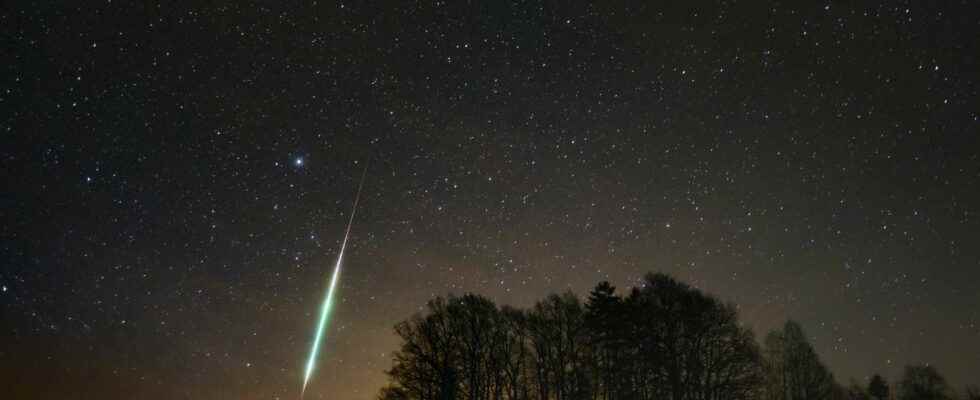The Lyrids is the name given to a meteorite swarm that is active every year between April 16 and 25. This is the first rain ofshooting Stars significant in the spring. It is also one of the oldest known (the Lyrids are mentioned in Chinese chronicles in 687 BC).
On April 22, at its peak, the hourly rate can reach 20 meteors when the constellation of Lyra — near which the radiant (between the brilliant Vega and the knee of Hercules, nicknamed the Kneeling) — is highest in the sky. In the past, jerks activity have surprised observers several times: more than 100 meteors per hour were visible in 1803, 1862, 1922, 1945 and 1982. For specialists, they occur on average every 60 years. The next one is announced for 2042.
How to properly observe the meteor shower of the Lyrids?
The micrometeorites that make up the Lyrids penetrate theatmosphere terrestrial to a speed average of 50 km/s. About a quarter of them leave in their wake beautiful persistent trails visible for several seconds.
Like the other meteor showers of the year, the Lyrids are fed by the debris left by a comet. In their case, it is C/1861 G1 Thatcher, discovered in 1861 shortly before its last perihelion. It was then 50 million kilometers from Earth. The star returns to visit the inner solar system every 415 years.
the Lyrid activity peak is usually April 22 but it is possible that the nights before and after you can see between 10 and 20 meteors per hour. The exact moment of the maximum remains difficult to predict. To make the most of this celestial spectacle, it is important to favor observation sites spared (as much as possible) by the light pollution. Of course, the presence of the Moon — variable depending on the year — reduces the visibility of the meteor salvo.
You will also be interested
[EN VIDÉO] Incredible shooting stars seen from space Here’s an unusual view of shooting stars: watch them enter Earth’s atmosphere from space aboard the International Space Station (ISS).
Interested in what you just read?
